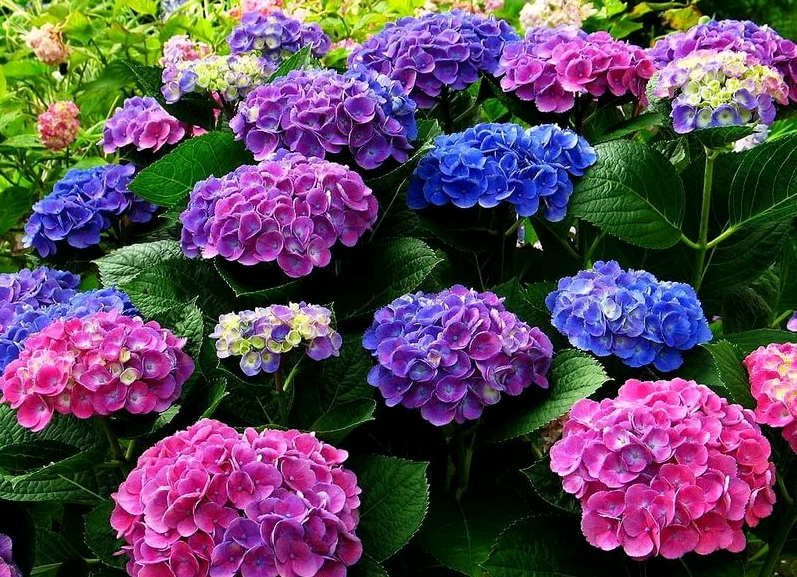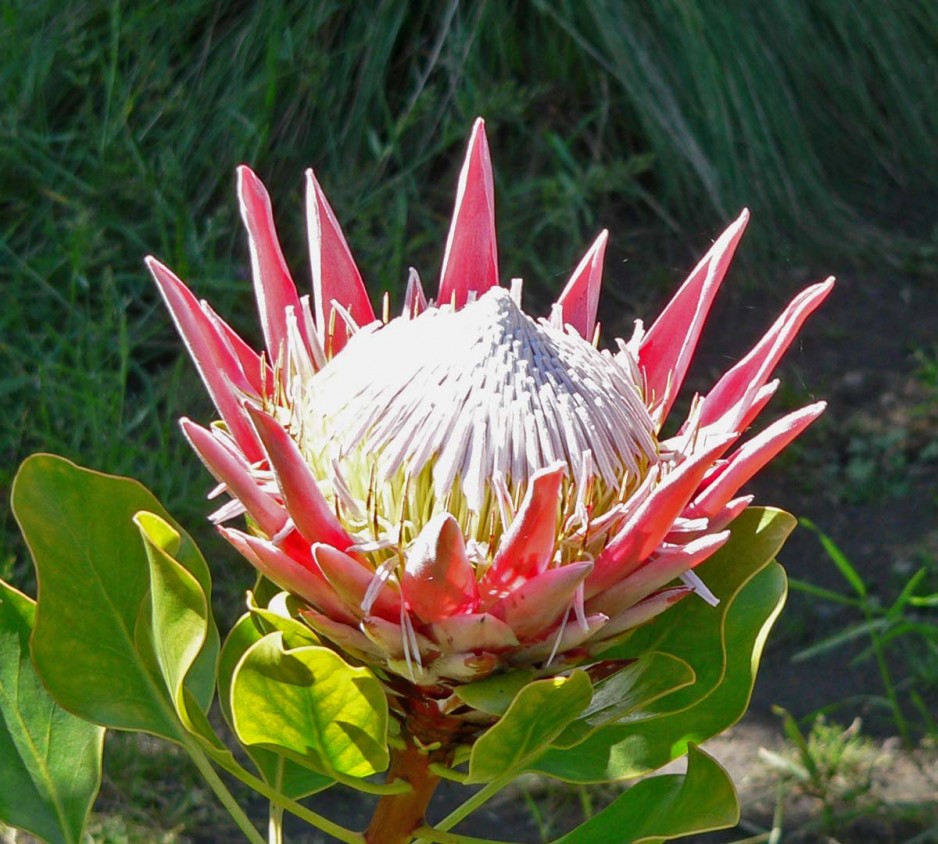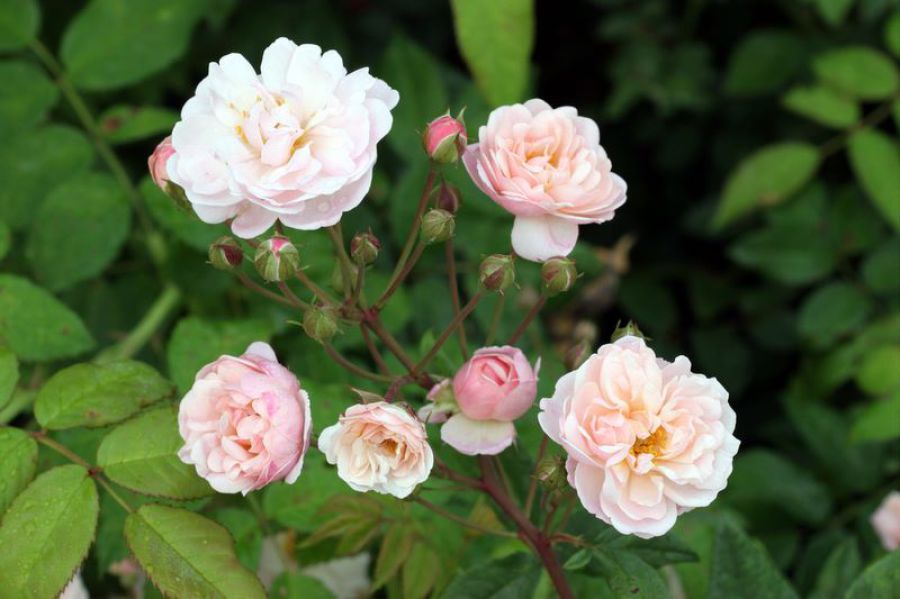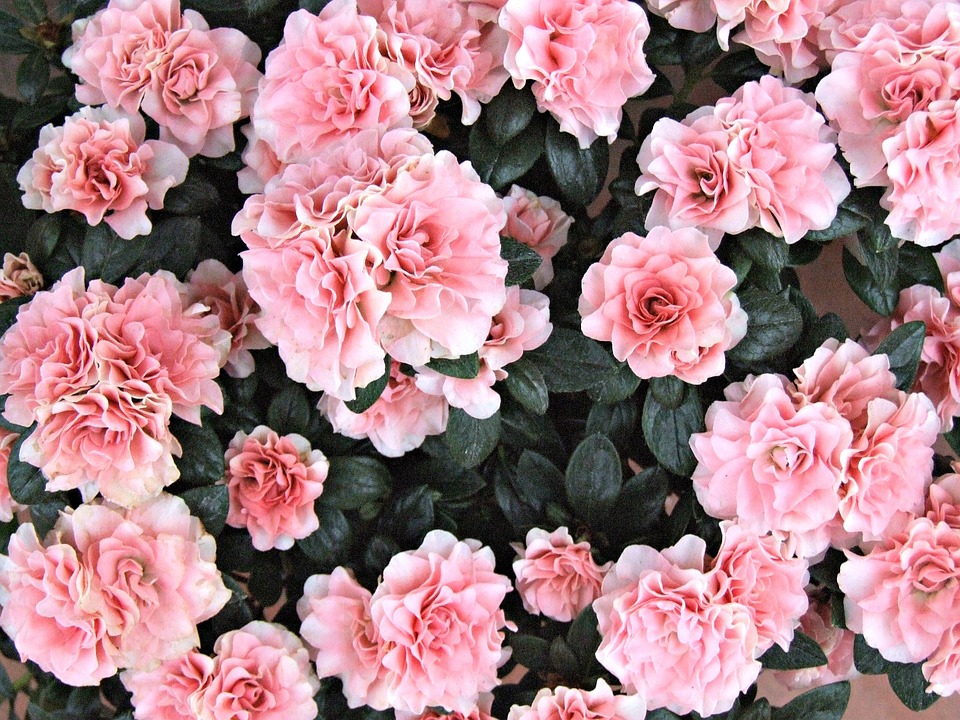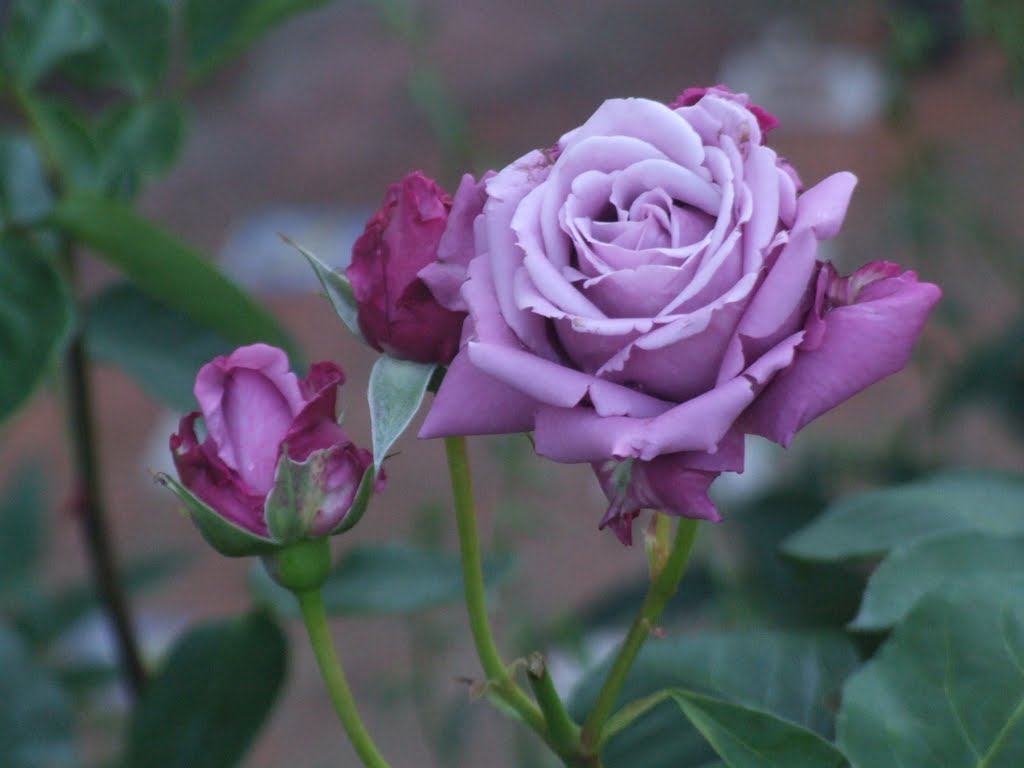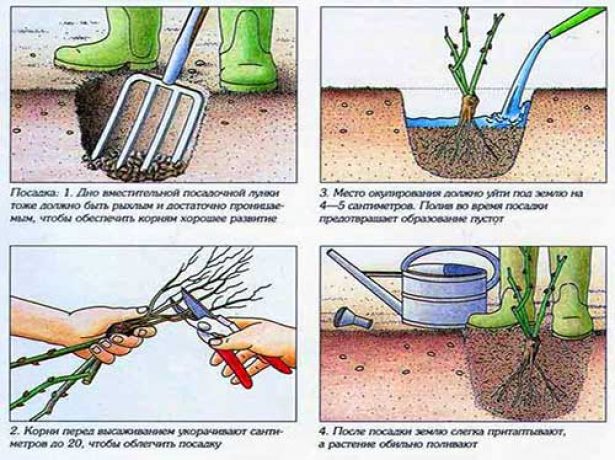Content:
- Classification of roses
- Roses species and varieties and their characteristics
- Purple
- Japanese rose
- Lilac Roses and Purple Roses
- Alpine rose
- African rose
- Beige roses
- Rooted
- Crimson roses
- Prickly rose
- Rose without thorns or Thornless
- Rose cinnamon
- Brown roses
- Shade-tolerant roses
- Terry
- Lilac roses
- Thorny rose
- Alpine rose flower
- African rose flower
- Lavender
- Premium
- Violet
- Salmon
- Peach roses
- Carrot
- Shade-loving climbing
- Planting and leaving
- Rooted roses are better or grafted
Many years ago, in the eighth century BC. Greek poetess Sappho "appropriated" the royal title to the rose, calling her the Queen of Flowers. Many songs, poems and poems describe the beauty of this flower. Currently, the rose is not at all what it grew in the wild. All the species that we are used to seeing have appeared in the course of hybridization for many centuries. It is a charmingly beautiful flower of the Rosehip family, often with a delicate scent. The homeland of these flowers is the East. They later moved to Italy and then conquered the whole world. In the modern world, we know roses as a shrub that has hard shoots or soft, creeping ones. Their height can be from 20 centimeters to 6 meters. Most often, there are thorns on the shoots, but there are also no thorns.
Classification of roses
| Groups | Park | Repair roses | Hybrid tea | Polyanthus | Mines and roses | Covering | Climbing | Shrubs | Floribunda |
|---|---|---|---|---|---|---|---|---|---|
| Single or inflorescences | Single or 3-6 pieces per inflorescence | single | single | inflorescences | singly | Singles and inflorescences | Singles and inflorescences | single | Inflorescences |
| Bush height | 1-2 m | 2 m | 60-150 cm | 100 cm | 40 cm | 4 m | Up to 5 m | Up to 5 m | 30-100 cm |
| Bud color | Pale pink to red. | Red pink beige yellow | White to orange red | White, red, pink, blue, purple. | Green to purple | Pink to red | The most diverse | White, pink, inert | various |
All types of roses that now exist are obtained through selection. For many hundreds of years, the humble rosehip has turned into a beautiful flower, changing its shape, size and even color. There are varieties of roses in green, black and even blue.
Roses species and varieties and their characteristics
There are many conventional groups, divided by the color of the buds.
Purple
In the wild, this color does not exist, this is the work of breeders. This group includes buds with blue, blue or purple petals. It is believed that the color was changed due to the introduction of the pansy gene. But it was not possible to achieve such purity as in the tricolor violet. All existing varieties have a lilac hue or purple hue.
Japanese rose
This is what they call Eustoma. Although Eustoma itself belongs to the gentian family. Her flowers are very beautiful. The colors can be very diverse - white, lilac, pink, purple. Unbroken buds of Eustoma are very similar to rosebuds, hence the name. The height of these flowers can be 80-85 cm. From the middle the plant begins to branch out and thus up to 30 flowers can grow on one stem. Eustoma is good at planting and is great for cutting. This plant is divided into two types: undersized and tall.
Tall varieties are grown in gardens, and undersized varieties are grown as indoor plants, on balconies and loggias.
Lilac Roses and Purple Roses
A group of plants consisting of various varieties of lilac roses. They are also sometimes called Violet or Blue. It depends on which shade is more.
Breeders as early as the eighteenth century were growing flowers with this color. The senior representative of this group is the Blue Nile. This is a hybrid tea rose. The bush is slightly less than 1 m high. There are many thorns on the shoots. The flowers are large - 18-20 cm in diameter. More often there is one on the shoot, less often 3 pcs. in the inflorescence.
Alpine rose
The shrub is called Rhododendron or rosewood, which belongs to the genus Heather. It can be evergreen, deciduous and semi-deciduous. He has charming flowers of red, purple, pink, white or lilac color, which are collected in bouquets of brushes.
African rose
Protea is another plant native to South Africa. It is an evergreen shrub with cone-shaped leaves and large flowers up to 25 centimeters.
Beige roses
This color cannot be found in nature. Many breeders have tried to cross the white and pink varieties to achieve such a delicate color. Luck smiled at the Chinese. There are many types with baked milk-colored petals. These are Caramel Antique and Miss Piggy, Alabaster and Osiana and many others.
Rooted
Those individuals that are grown from a shoot (cutting) are considered to be own-rooted.
Crimson roses
The enchanting beauty of the crimson color is simply mesmerizing. After full disclosure of the buds, their color fades somewhat, but they do not become worse from this. These proud beauties bloom all summer and autumn. Such bushes will be a wonderful decoration for the garden.
Prickly rose
This plant is thorny-leaved, better known as rose hips. This is a branchy bush more than 2 meters high and up to 1.5 m wide with small flowers that emit a delicate and pleasant aroma. With small leaves, green. Flowers are more commonly found in white. The whole bush is covered with thorns. Shoots and leaves and even pedicels are all covered with sharp thorns.
Rose without thorns or Thornless
One Russian singer sang: "Where there are thorns, there are roses ...", but nevertheless the breeders proved that much is possible and brought out, in which these thorns are absent. It:
- Tenga-Venga. This is a plant with a large, bright pink flower, which has no thorns on a long (up to 85 cm) stem;
- Kew Gardens is a snow white from Great Britain who also has no thorns;
Rose cinnamon
This is the same rosehip that grows everywhere in Russia. Its fruits are rich in vitamin C, which are taken as food and as a medicinal raw material. The fruits are round red.
Brown roses
Genetics has given the world many brown species. Shades of petals can be from light (coffee with milk) to almost black color:
- Coffee break;
- Terracotta;
- Leonidas;
- Delbara Malicorne.
Shade-tolerant roses
Almost all roses are very fond of the sun. But in any area there is a shadow. What about rose lovers in such cases? The answer is simple - you need to choose shade-tolerant species. Here are some of them:
- Jean Stephenne;
- Ritausma;
- Ballerina (Ballerina);
All these species have a very strong aroma and their flowers will not fade longer.
Terry
When there are more than 20 petals in a bud, such varieties are called terry. In each group, you can find more than one type of double rose:
Tea rose
- Cardinal;
- Blue Nile.
Floribunda
- Mercedes;
- Iceberg.
Grandiflora
- White iceberg;
- Valentina Tereshkova.
Shrubs
- Munstead Wood;
- Claire Austin.
Lilac roses
Geneticists in 2004 bred Blue Moon, containing the pigment delphinidin in the cells. The petals of this beauty turned out to be an unusual purple color.
Thorny rose
This is what the artichoke is called. At a young age, it looks a lot like a rose. The artichoke is not only beautiful, but also extremely tasty. The yield can be up to 10 pieces. from the plant.
Alpine rose flower
This is the name of the houseplant - Azalea. The homeland of this Altai rose is Asia.Caring for this fussy is very laborious, but still, many growers like it very much.
African rose flower
Roses, whose homeland is sultry Africa, have long been loved all over the world for their exclusivity and variety of colors, as well as very good durability when cut. They can stand in a bouquet for up to three weeks.
Lavender
Many breeders are all trying to breed a rose with blue flowers, but so far they have not succeeded. The color is either lavender, purple or lilac.
Some varieties that can be classified as lavender:
- Claude Brasseur;
- Mainzer Fastnacht.
These flowers have beautiful lavender petals and a strong, pleasant scent.
Premium
"Premium" means the best, the first. These roses include:
- Wendell;
- Black Baccarat;
- Chippendale.
All these varieties are united by the beauty of the buds, strong bushes and the fact that they do not fade for a long time when cut.
Violet
The name Violetta unites several different groups. This can be tea-hybrid and claimings, and ramblers.
Violetta Climing has deep purple buds with a lilac underside. Flowers are small in diameter, about 3 cm, double type. There are 30 inflorescences in the brush. Blooms more in early summer. Violetta has no thorns.
Violetta is climbing. On the shoots, brushes are formed, consisting of 30 semi-double flowers of pink-purple tones. The size of the flower is about 4 cm. The height of the shoots grows up to 3 meters. Shoots are not hard, support is required.
Violetta is tea-hybrid. On a bush 1 m 20 cm high, there are densely double flowers with a diameter of almost 12 cm. Purple buds have a pale lilac back. Shoots without thorns. Differs in very long flowering.
Salmon
Many varieties are salmon-colored:
- Caramella. Shrub. The height of the bush is just over a meter. The color of the petals is orange-pink.
- Gazebo. Shrub. The description is similar to Caramella, only the middle is darker.
- Fireworks. Shrub. More than one and a half meters high. It is believed that it should be classified as semi-pebble. The color is more orange.
Peach roses
Peach is a fruit with a warm yellow-orange color with a slight blush. There are many colors similar to this fruit. They were all assigned to a conditional group - peach roses. Bushes with such flowers will perfectly emphasize the color of other roses in contrast. They are also good in solitary planting.
Carrot
There is a small Carrot Rose. Her homeland is China. The diameter is only about 2 cm. The height of the bush also rarely grows to 50 cm. For such a carrot baby, loam and, of course, an area with a lot of sun are best suited. Also, the mini Carrot variety can be planted on balconies, loggias and window sills as a pot plant.
Shade-loving climbing
For many roses, shade is not only bad, but also good. The flowers burn out in the sun. Become dull and not beautiful. Or they burn the edges of the petals. Some varieties that love cool shade:
- Domaine de Courson. It is a climbing rose that is resistant to wet weather and powdery mildew. Scourges are more than 2.5 m in length, almost without thorns and aroma. The diameter of the bud is 8 cm. The pink double flower has 35 petals.
- Blush Noisette. Forms caps of terry flowers. Each brush contains 50 pieces. The color of young buds is crimson. Dissolving, they become pale pink, later fade to white.
- Ghislaine de Feligonde. Launched on a support, this hybrid has a height of 3-4 m. The buds of this plant are apricot-yellow, having blossomed, they become almost white, and if it gets colder, they begin to turn pink.
Planting and leaving
It is best to plant these roses on the sunny side, without drafts. She loves the soil is not sour, rich in humus. It is necessary to look after, as well as for other members of the family, Rosehip: timely watering, fertilization, loosening, shelter for the winter.
Rooted roses are better or grafted
For better growth, varietal cuttings are grafted onto stronger and more powerful roots, most often rose hips.Not every variety can grow a good rose from the cuttings, but even the weak survive perfectly on the rootstock. The disadvantage of grafted roses is that in regions with a cold climate, they may not overwinter and in the spring only rose hips will grow from the root (if it grows). On the rootstock, the growth of the plant is faster. But on its own roots the plant grows stronger. So it is up to every gardener to decide which varieties to choose.
